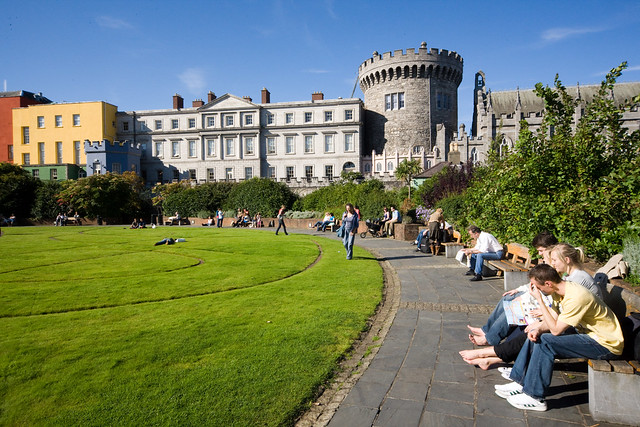If, as the old saw goes, everyone’s a little Irish on Lá Fhéile Pádraig, as they say in Gaelic (even yours truly just found some Emerald Isle heritage thanks to DNA testing!), what better occasion to visit the the gateway to the Emerald Isle which bestowed this happy holiday upon us? With a lovely setting on Dublin Bay, split by the River Liffey, the city offers fine historic and modern architecture; fascinating sites and culture; and a vibrant urban life that will tickle your fancy no matter what your fancy might happen to be. For example…
Did you know that Dublin was founded as a Viking settlement way back in the 9th century? It wasn’t until the Normans who’d conquered Britain also pushed into Ireland in 1169-71 that they were finally dislodged. These rowdy gents and others have left some richly historic spots going back a long way to explore in this city, now covering 44 square miles (115 square kilometers) and with a population of about a bit over a half million (yet adding up to roughly a third of that of all of Ireland’s). You’ll find many the key tourist sights absolutely not to miss in several key areas, starting with the oldest, city center (Dublin 2), which includes ancient cathedrals such as Christ Church (11th century) and St. Patrick’s (12th century), as well as doughty 13th-century Dublin Castle; the 18th-century City Hall; Trinity College (in whose Old Library you can ogle the Book of Kells, the illuminated 9th-century Bible that's one of the most glorious in existence); the National Museum of Ireland branch devoted to archaeology (including Europe’s finest collection of prehistoric gold artifacts); and Dublinia, which in a bow to Dublin’s Viking heritage is a museum and interactive experience focusing on key aspects of Dark Ages and medieval Ireland.
Adjacent to the Old City, on the south bank of the Liffey River, is another district with roots in the Middle Ages, Temple Bar (top), with various cobblestone streets and the city’s liveliest nightlife as well as cultural landmarks such as the Irish Film Institute and the Arthouse Multimedia Centre. Lovers of both heritage and ethyl (alcohol) should not miss a visit to the Guinness Storehouse (touted as Ireland’s number-one tourist attraction – I do wonder why) and the Old Jameson Distillery for some fine Irish whiskey action. Dublin has a famously literary side, as well (which may or may not be connected to the sauce), with its Dublin Writers Museum and plenty of places where you can follow in the footsteps of great writers and playwrights including Oscar Wilde, James Joyce, George Bernard Shaw, and William Butler Yeats.
St. Patrick’s Day Festival
This week's feast of St. Padraig became a national holiday in 1903, and the first parade was held in Dublin in 1931. In 1996, though, the Irish government decided to kick it up a notch and turn the whole thing into a multi-day festival, which this year starts on Saturday the 14 and culminates on Tuesday the 17th with the big parade from Parnell Square to just beyond St. Patrick’s Cathedral. Various buildings are lit up in green, and annual events include fun fairs, street performances and shows of all kinds, a boat race on the Liffey, a craft beer and food market, Irish music concerts, an Irish dancing festival, a family treasure hunt, and special walking tours. And of course drinking. Lots of drinking. Worth a thought for 2016! ![]()
Useful Facts
-Dublin’s population is around 528,000.
-The climate is relatively moderate and mild compared to mainland northern Europe, with snow uncommon in winter and temperatures generally around 5° Celsius (41° Fahrenheit); summers are cool – about the hottest it gets is around 19°C (66°F) in July.
-More information: VisitDublin.com
images | LenDog64, infomatique


Comments
Sláinte mhaith!